03-02-23 // BURNING HIJABS, CUT-OFF HAIR, AND THROWN TURBANS – INTERVIEW WITH BERND UPMEYER

Cover of MONU’s current issue #35 on Unfinished Urbanism, ©MONU
Burning Hijabs, Cut-off Hair, and Thrown Turbans
Interview with Bernd Upmeyer
Maryam Mohammadzadeh: Could you briefly introduce yourself and your work with MONU?
Bernd Upmeyer: To start with – and in the late 1990s and the early 2000s – I studied architecture in Germany, where I was born, and in the Netherlands. However, since the beginning of my studies and during the course of my career I have always been fascinated by topics and subjects that surround the field of architecture, including urban topics, but political, economic, social, and other aspects too. You can say that ever since I started focusing on architecture in a serious way I have been intrigued to find out the hidden political, social, and economic truths, formal realities, and interdependencies in architecture and in cities. In a way just looking at and designing buildings and urban spaces was never enough for me. I somehow always felt the urge to look behind the most visible and most obvious aspects of architecture. This desire to investigate architecture in its widest sense motivated me eventually to create MONU – Magazine on Urbanism in 2003, one year after graduating as an architect and having moved to the Netherlands, where I still live and work today. MONU was for me and still is today a fantastic way to explore new topics around architecture and cities. Unfortunately, I find increasingly less time for MONU as some of my other projects and activities that I am currently involved in with my Rotterdam-based Bureau of Architecture, Research, and Design (BOARD) – such as large scale urban design projects, interior designs, a new book and research project, and teaching appointments – became more and more serious, requiring ever more of my time. That is also the reason why over the past two years only one issue per year was released of MONU, which initially appeared twice a year ever since 2004. But the aim is to keep MONU going in one or the other frequency.
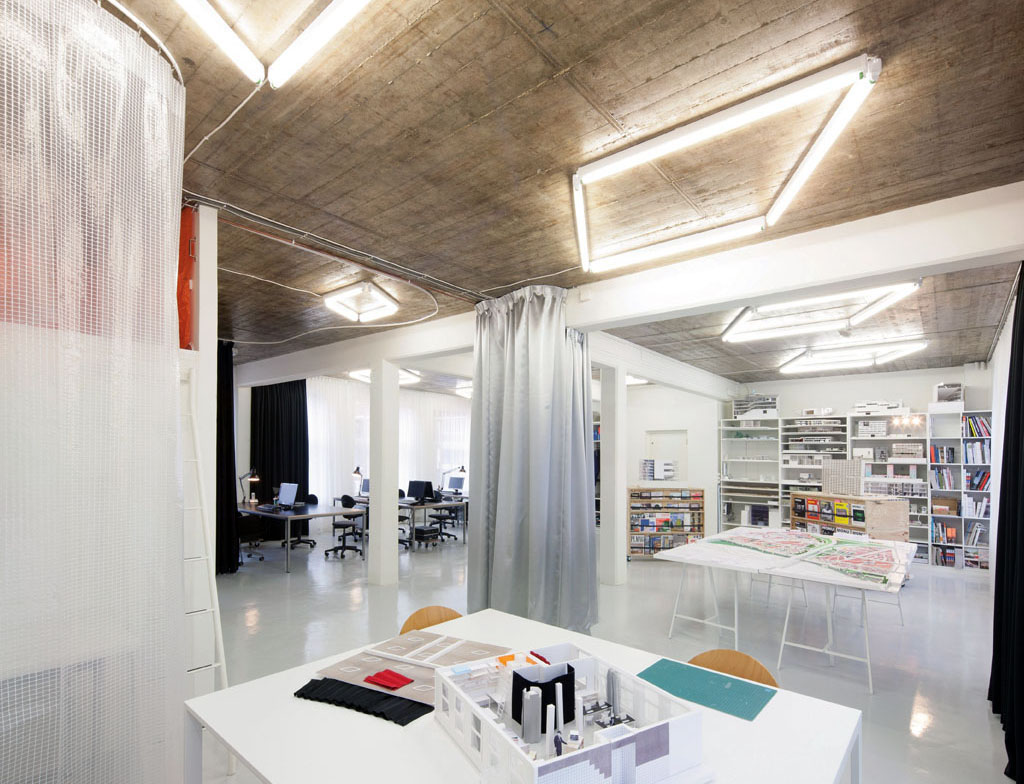
BOARD’s office in Rotterdam, Photo by Sonia Arrepia, ©Sonia Arrepia
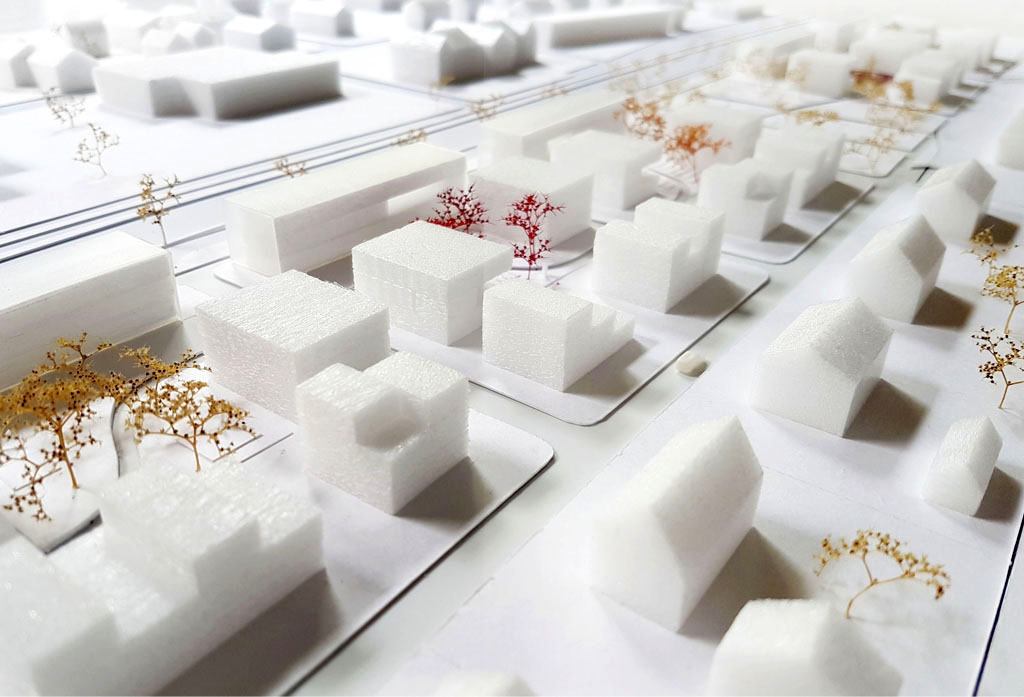
BOARD’s current large scale urban design project in Quakenbrück, Germany, ©BOARD
MM: How did the topic of Protest Urbanism come about for you? How did you approach the topic?
BU: The topic of MONU’s 34th issue on “Protest Urbanism” was very much inspired by the two issues that were released previously, namely #32 on more affordable cities and #33 on the consequences of the coronavirus pandemic for cities. Thus, #34 became a continuation of these two issues for certain aspects and a kind of spin-off issue. Because in those two issues urban protests had surfaced already as a very interesting side topic, which we considered incredibly urgent to address and to discuss. That is why we wanted with MONU #34 to focus entirely on protests as an urban phenomenon, that appeared to be used frequently and intensely as an urban approach for change. In a time when most activism is expected to take place in the digital realm and via social media – not only because of the coronavirus pandemic – the numerous mass-events in the physical spaces of cities came to us as a surprise, which intrigued us to such an extent that we decided to study them further. For they have become indicators and symptoms of what is wrong in our world and our cities in multiple respects. We approached the topic of “Protest Urbanism” by writing a so-called “call for submissions” text – something that we always do at the start of every new MONU issue to trigger debates and invite people to contribute – in which we tried to define the topic and to ask the right questions that we considered important to investigate.
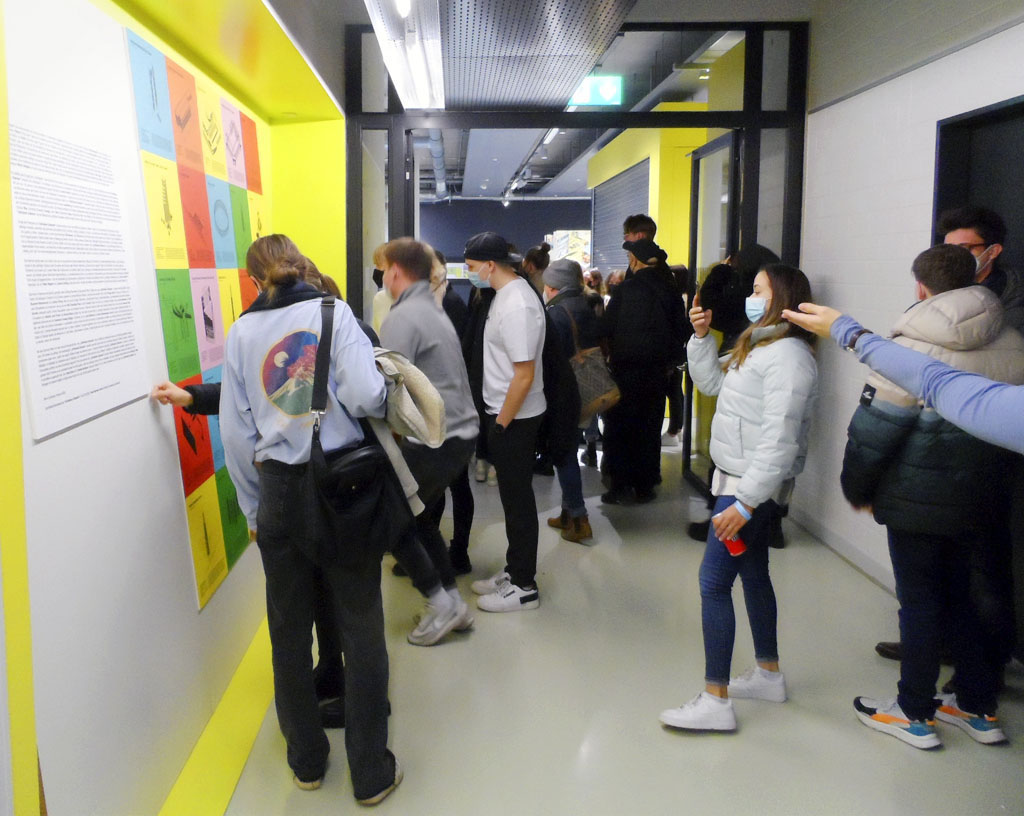
Exhibition of the works of the architectural theory seminar “Unfinished Urbanism”, led by Bernd Upmeyer, at the Peter Behrens School of Arts in Düsseldorf, 2022, ©BOARD
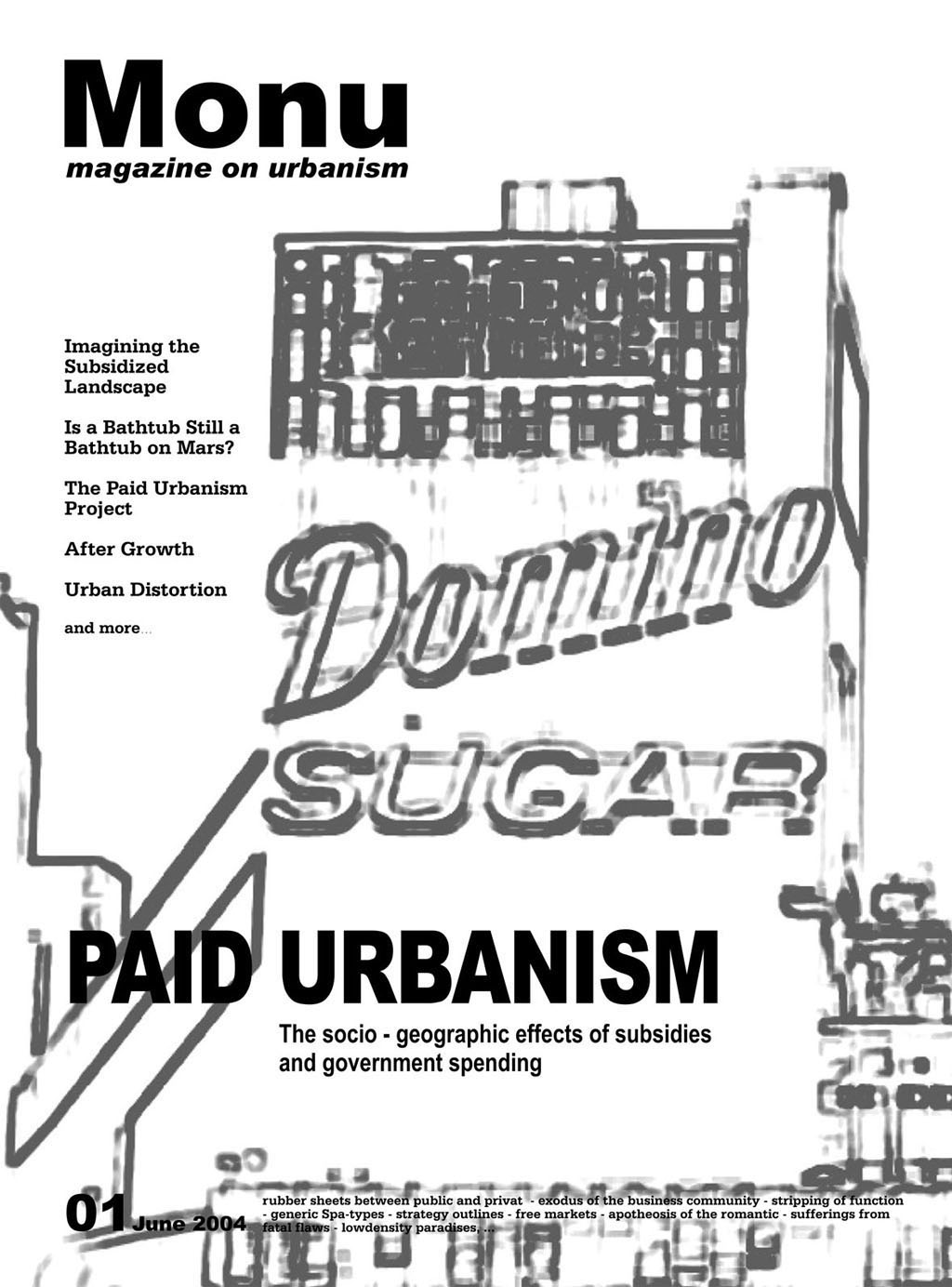
Cover of MONU’s first issue on the topic of Paid Urbanism, 2004, ©MONU
MM: When I first heard the term Protest Urbanism, I associated a number of themes with it. The term is very rarely used. What are the main components of Protest Urbanism?
BU: By adding a different adjective or noun next to the word “Urbanism” – in this case “protest” – we always aim to place words next to each other that are usually rarely put together, which ideally inspires new readings and interpretations. That means also finding terms that are rarely used, which is an important strategy of MONU. We do not always succeed in creating rarely used terms though, but we always aim for it. According to us and our issue #34, the main components of “Protest Urbanism” reveal themselves through their physical manifestations of urban protests, their methods and strategies in time and space, and their impact on cities. Ideally “Protest Urbanism” creates opportunities for a more democratised form of urban design, especially in cities where public participation in urban design and urban planning is not working or insufficient. As a result “Protest Urbanism” supports the capacity of citizens in designing cities leading to the ability to participate actively in planning and design decisions. Protests can become, for example, breeding grounds for the evolution of urban agencies transforming un-addressed and un-fulfilled claims from protests into more persistent and adaptable energy for long-term urban action. Their creation may even become an infrastructure to counter the existing system and co-create a more democratic system for urban production. “Protest Urbanism” emerges nevertheless not merely as a protest against a certain form of authoritarian urbanism, nor as simply a spatial form of opposition, but as a highly heterogeneous call for the reconstitution and recognition of fundamentally ‘plural’ and relational forms of making and inhabiting the city.
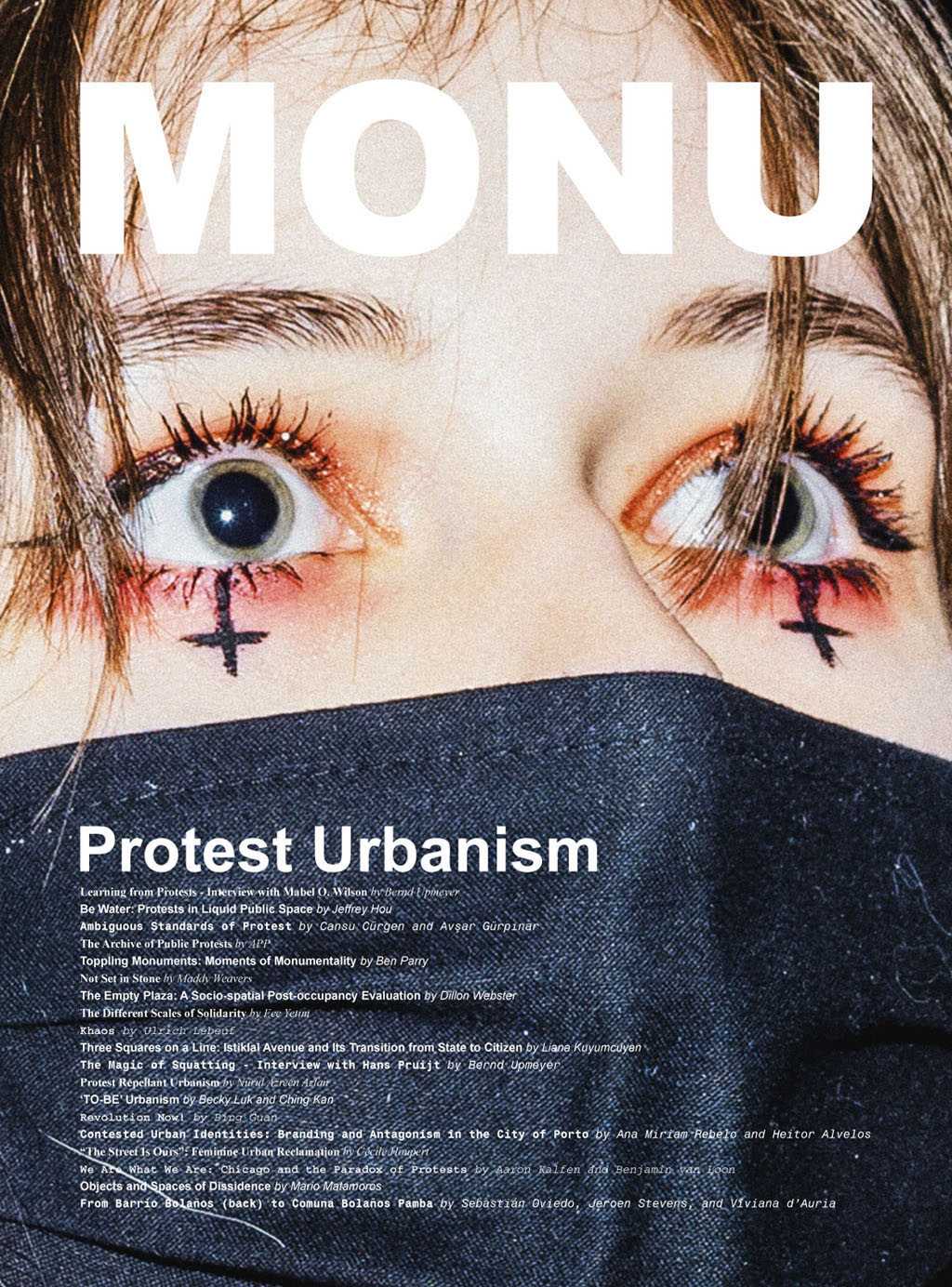
Cover of MONU #34 on Protest Urbanism, 2021, ©MONU
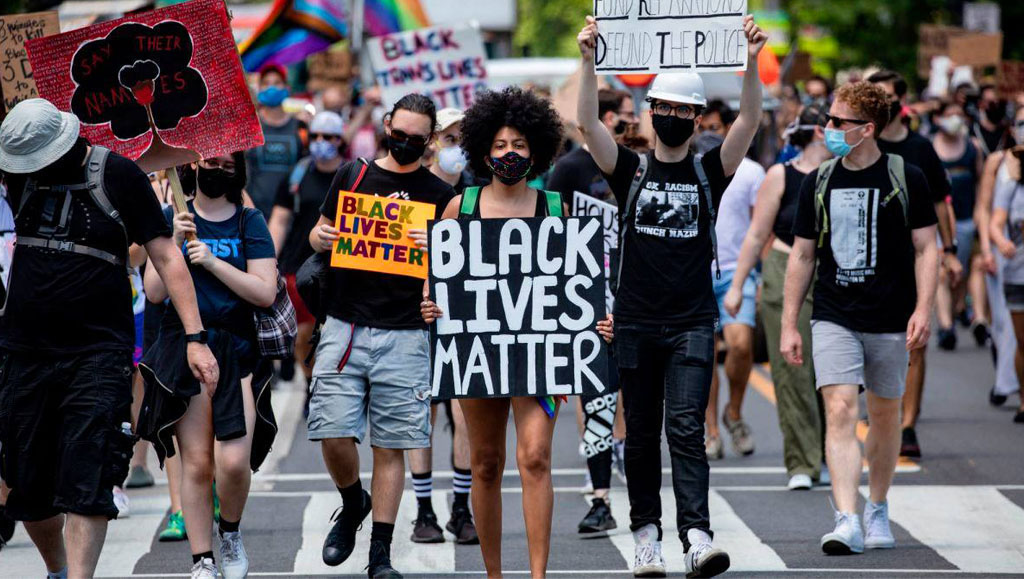
Image for “Call for Submissions”-text for MONU #34, 2020
MM: What is the role of architecture alone in Protest Urbanism? Which architectural measures can contribute to a protest or sabotage it?
BU: When it comes to “Protest Urbanism” I think the most important role of architecture is defined by its ability to either contribute to a protest or to sabotage it, because it has the capacity to do both. This is especially true since physicality – and therefore architecture – still matters for protests and that there is still the need of having physical bodies in a public space and among buildings in order for a protest to have an effect. Because bodies occupying large spaces or marching through different types of arteries, be it streets or freeways, still remains a central tactic for people engaging in political protest. But even when activism takes place in the digital realm and via social media, there are still physical spaces needed in which the digital infrastructure is sheltered and this is where architecture and buildings come into play too. So, architecture can contribute positively to protest activities by providing the right shelters and spaces that are needed for a particular protest. Therefore, architects can play an important role – as well as urban designers, urban planners, and other stakeholders in our cities – in shaping, defining, and limiting protests. In an interview that we did for #34 the urban sociologist Hans Pruijt emphasised that architects can, for example, offer their expertise in helping to repair and renovate legally squatted buildings to support the activism of the squatters. As an example he mentioned an old salami factory called “Metropoliz” on the outskirts of Rome, which has its own website, workspaces for artists, and even a gallery, and where Romani people were invited to build their houses inside.
However, such architectural measures can also be counterproductive, as protests might happen with no regard to, and likely consciously against, intentionally allocated spaces for activism. Designs can therefore easily be rejected by protesters revealing that protests are rather an improvisational performance in which actors respond to temporal and physical cues. That is why spaces for protest are usually not designed, but taken over by the dissidents and used for their purpose. Thus, to design spaces for protest risks being quite unproductive. If architects or designers aim to help and support protesters they should actually team up with the activists at a very early stage of their activism asking them what spatial changes would improve their activities, offering their skills in that way and ideally becoming activists themselves.

Metropoliz Squat, Rome, 2014, Photo by Hans Pruijt, ©Hans Pruijt
MM: What role does public space play in the subject of Protest Urbanism?
BU: Both the physical public space and the digital public space play an absolutely crucial role for “Protest Urbanism” as these are the spaces where most protests take place. There might be some protests happening in private spaces too, within families for example, but usually they are smaller in size, impact, and relevance. Although according to Andrés Jaque – as he argued in our interview with him for MONU #24 on “Domestic Urbanism” – what happens in private domestic spaces appears to be very relevant for our societies. For him, a great number of the processes by which our societies are shaped take place in domestic interiors, the domestic realm, and in relation to very domestic elements such as the table setting, the Christmas tree, or the TV remote control. Nevertheless, I still would argue that public spaces still play the most important role when it comes to “Protest Urbanism”, because when buildings and open spaces become privatised they usually no longer serve the public by remaining open to acts of protest. Therefore, it is important to be mindful of how we as architects, planners, and urbanists design and build cities that facilitate the flows of global capital – commerce, tourism, and leisure – but ignore the political life of its residents. That is why we as designers need to be aware of what is happening on the ground and how our public spaces are created.
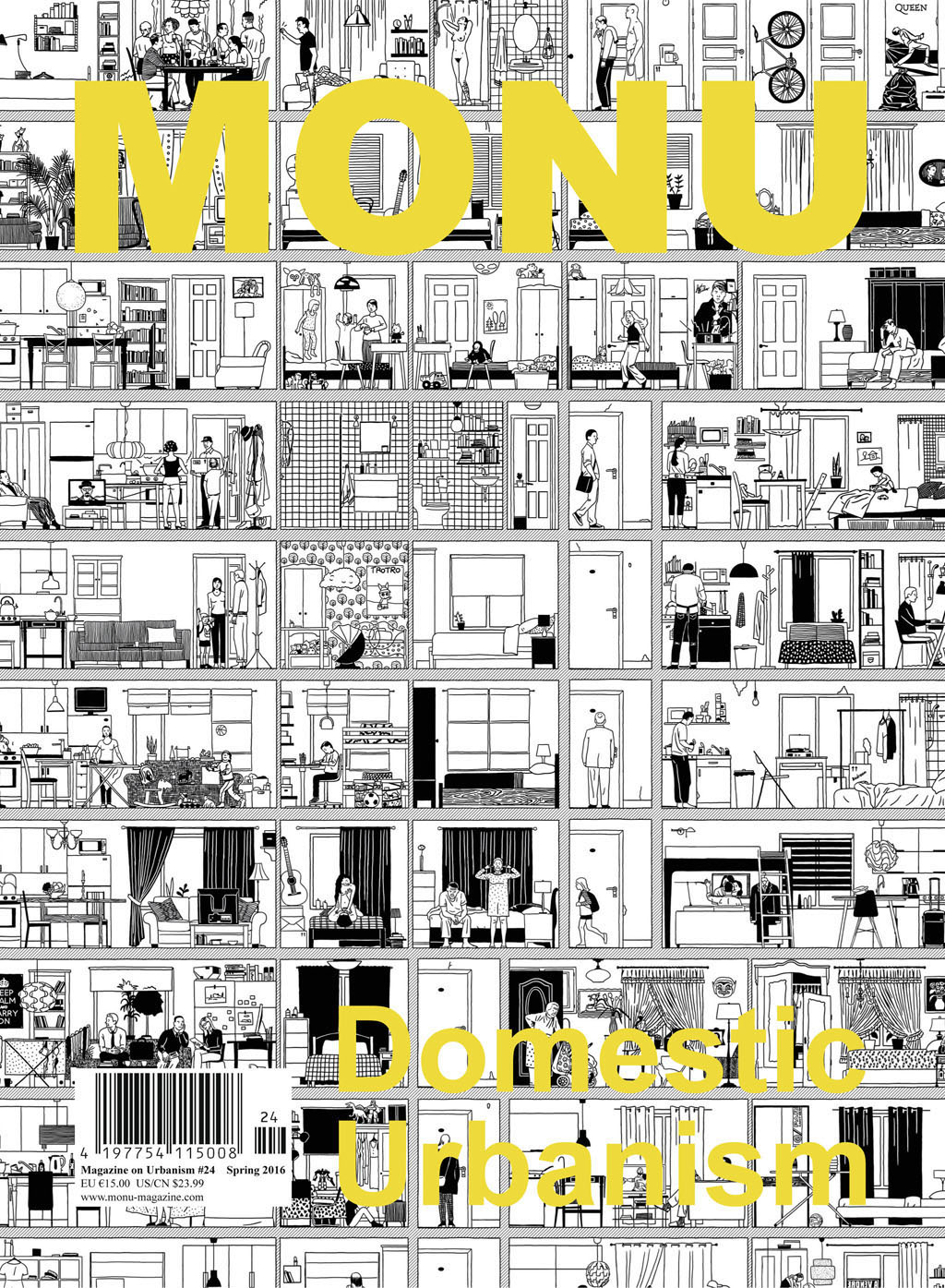
Cover of MONU #24 on Domestic Urbanism, 2016, ©MONU
MM: Which building would you name as an example of Protest Architecture and why? What significance do such buildings have for the surrounding urbanism or the people?
BU: I think that buildings alone – without being used and surrounded by activists or protesters – have a rather limited capacity to protest against something by themselves, especially larger buildings, in which usually large sums of money are invested to first of all provide and accommodate certain functions, such as housing, office space, etc. and to produce a revenue. To convince a project developer or investor to spend money on a building that is supposed to function as “Protest Architecture” is therefore a fairly difficult if not impossible task. That is why I would argue that smaller buildings or structures, especially when they have to be newly built, can more easily be designed and created for the particular purpose of protest and as “Protest Architecture”. Particularly small structures or objects such as memorials, monuments, or sculptures can therefore be quite effective and realistic means of protest.
But larger buildings still have the potential to become “Protest Architecture” at the end of their lifespan, especially when they have been unused for a longer period and can be squatted and used by activists and protesters. Then such buildings can become symbols of protest serving as bases of activism. As an example I would name the so-called “Poortgebouw” in Rotterdam that originally guarded the narrow entrance to the inner harbour of Rotterdam and functioned as an administrative building. Since the 1980s and until today the building is squatted and used for political manifestations, city-wide squatters’ meetings and even international squatting conferences.
Alternatively, but only in a limited way, buildings can also protest against a former or prevailing architectural style to a certain extent. Just think about Adolf Loos’ 1912 modernist building at Michaelerplatz in Vienna that contrasted with both the historicism and the floral ornaments of Secessionist architecture of the time. Although I would not define such a building exactly as “Protest Architecture”, but as an architecture that tries to overcome and distinguish itself from a particular style through a different appearance, a process that happened again and again throughout the history of architecture and will continue in the future, as buildings have to adapt to the changing needs of an ever-changing society.
The most significant meaning of “Protest Architecture” for its urban context is probably found in its symbolism that an alternative way of life and expression is tolerated and possible, that can counterbalance negative prevailing conditions such as, for example, the increasing hyper-capitalistic and neo-liberal tendencies in our cities.
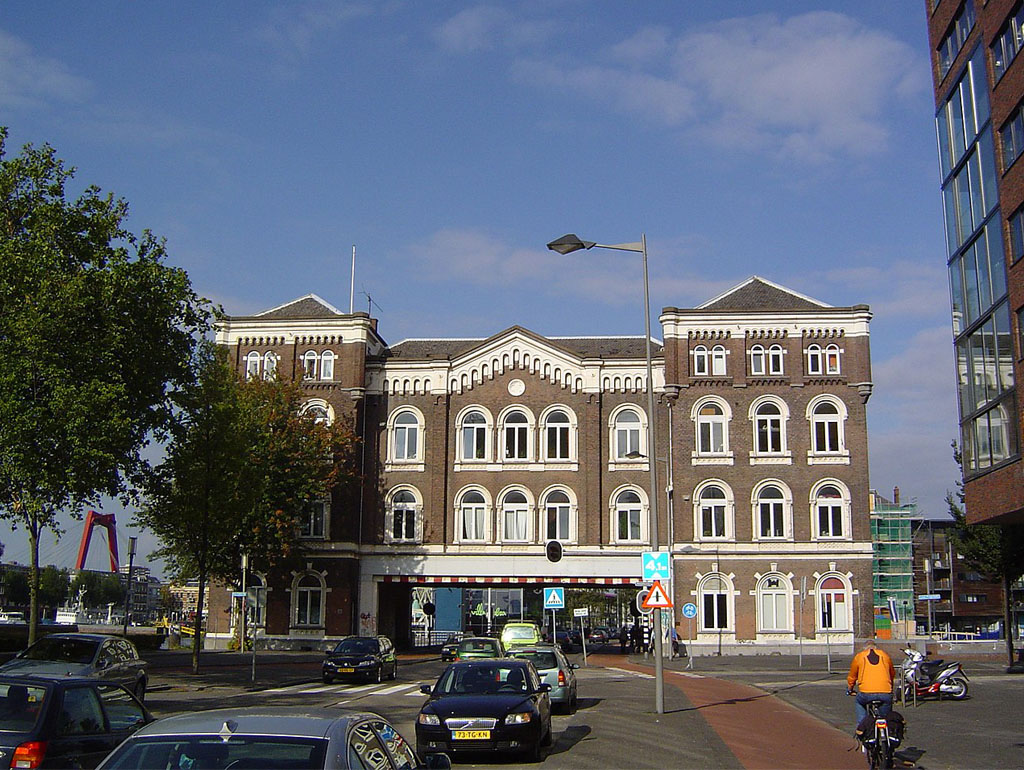
Poortgebouw in Rotterdam, 2007
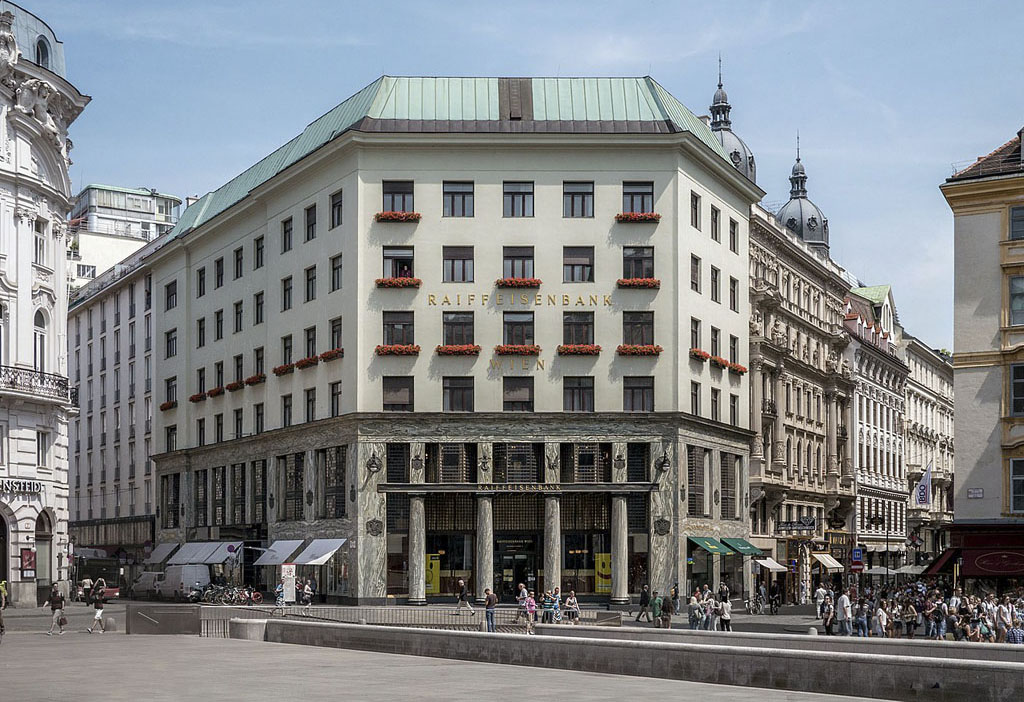
Adolf Loos building at Michaelerplatz, Vienna
MM: Why is it important that (we) architects deal with the topic of Protest Architecture? What is our role?
BU: Because by doing so we can contribute to the improvement and evolution of our societies and cities, creating opportunities for more appreciated and more democratised forms of spaces, and the way in which we live together. Apart from offering our expertise to help creating spaces for protest and activism such as the aforementioned former salami factory “Metropoliz”, we can be particularly helpful by designing urban means of protest such as memorials, monuments, or sculptures – whether as temporary or permanent structures – that I listed above. In 2016, the American architect, designer, and scholar Mabel O. Wilson, who we interviewed for MONU #34 too, helped designing the Memorial to Enslaved Laborers at the University of Virginia in Charlottesville, Virginia, US, which one might call a protest structure or even “Protest Architecture”, although she would rather describe it as a structure for advocacy. With the memorial she and her team did not only design a memorial, but also a process through which various communities could engage in a dialogue about the history of slavery and anti-black racism of today. They wanted the memorial to not become a site of forgetting, but instead a space that allows for gathering, reflection, and action. How well the space worked was demonstrated well before the official opening of the memorial when in June 2020 a small Black Lives Matter protest happened in the central gathering space of the memorial. The following day a much larger event organised by a group from the medical school, White Coats for Black Lives, convened for a protest at the site against the brutal murder by police of George Floyd. It must have been around 200 people gathering in and around the memorial in order to forge a connection between the violence that kept this community enslaved and the brutality unleashed on George Floyd and others. Wilson told us that when those events unfolded, they, the design team, understood that they built a vital space that could serve as a platform to continue this important conversation about histories and legacies of oppression.

The Memorial to Enslaved Laborers, Photo by Alan Karchmer, ©Alan Karchmer
MM: You must have noticed that the first revolutionary women’s movement is taking place in Iran. What are your thoughts on this?
BU: The Mahsa Amini protests in Iran are incredibly brave and I hope that they will lead to changes in the political situation in the country, to an end of the mandatory hijab, and more rights, freedom and opportunities especially for women.
MM: Is there anything special about this protest in relation to our topic?
BU: What is special about the Mahsa Amini protests in relation to what we discussed in MONU #34 is the fact that in these protests physicality matters quite a bit too, which is expressed in the use of symbolic objects of protest such as burning hijabs, cut-off hair, and thrown turbans. Because in the magazine we introduced real objects of protest into the discussion, such as bananas, hoodies, bras, and clothes hangers that became, for example, the symbols of the abortion protests in Poland in 2016 and important symbols and tools of these protests. According to Cansu Cürgen and Avsar Gürpinar a common quality of these objects are their evocative, enhancing, amplifying, or connotative qualities. Beyond their primary functions, these objects become indices, where the impact is exponentially increased through accumulation. In that sense, they set the “ambiguous standards of protest”, becoming objects of “Protest Urbanism”.

Clothes hangers as objects of protest, 2020, Photo by Joanna Musiał, ©Joanna Musiał, courtesy APP
MM: In your opinion, what is the best possible urban manifestation of Protest Architecture?
BU: I believe that for all the three possible “Protest Architectures” that I mentioned – “Protest Architecture” as small structures; “Protest Architecture” as shelters for protest; and “Protest Architecture” as a challenge to a particular architectural style – it would be best and most effective if they were located as visible and as accessible to the public as possible, ideally in public spaces. However, each of the three examples has its own particular meaning requiring a particular implementation in cities too. The small structures I would, for example, scatter around the city as disperse as possible to have an effect. The shelters for protest I would locate in decaying neighbourhoods, where most empty and abandoned buildings can be found, and where they could help bringing empty buildings and struggling neighbourhoods back to life, providing at the same time affordable accommodations for activists, protesters, but artists too. Buildings that try to overcome and distinguish themselves from a particular architectural style, like Adolf Loos’ Michaelerplatz project, work probably best if they are placed directly next to buildings that they aim to contrast to.
MM: How do you assess the development of this topic in the next 5 years?
BU: To create a world and cities that are increasingly more democratic, offering more and more freedom and equal rights to its citizens, protests will and should continue in the future too and not only in the next 5 years but also in the coming decades. This means that the topic of “Protest Urbanism” will remain a relevant issue that needs to be addressed in the future too. But I hope that these protests will not be as brutal and violent as many are today and have been in the past, nevertheless achieving changes and adjustments that are needed at a particular place.
MM: Are there other inspirations that you would like to share?
BU: With MONU #34 we were certainly interested in the political aspects of protests and analysed the manifestations, methods, strategies, reasons, and causes of today’s protests. And this is were the Mahsa Amini protests in Iran that interest you become very relevant, demonstrating how protests can serve fundamental democratic purposes and function as organisms within the larger urban theatre.
But although the issue of “Protest Urbanism” is indeed related heavily to politics, we wanted to discuss the topic first and foremost in relation to cities and urban aspects. When trying to find answers to the question of how urban spaces and even city planning might be influenced by protests we could, for example, demonstrate how squatting as a form of urban protest and as “direct action” achieved to preserve the 19th-Century street grid of a neighbourhood in Amsterdam, changing the urban planning of the city fundamentally.
Title: Burning Hijabs, Cut-off Hair, and Thrown Turbans
Author: Bernd Upmeyer
Date: February 2023
Type: Commissioned interview
Publication: Peter Behrens School of Arts Publication
Location: Düsseldorf, Germany
Interviewer: Maryam Mohammadzadeh